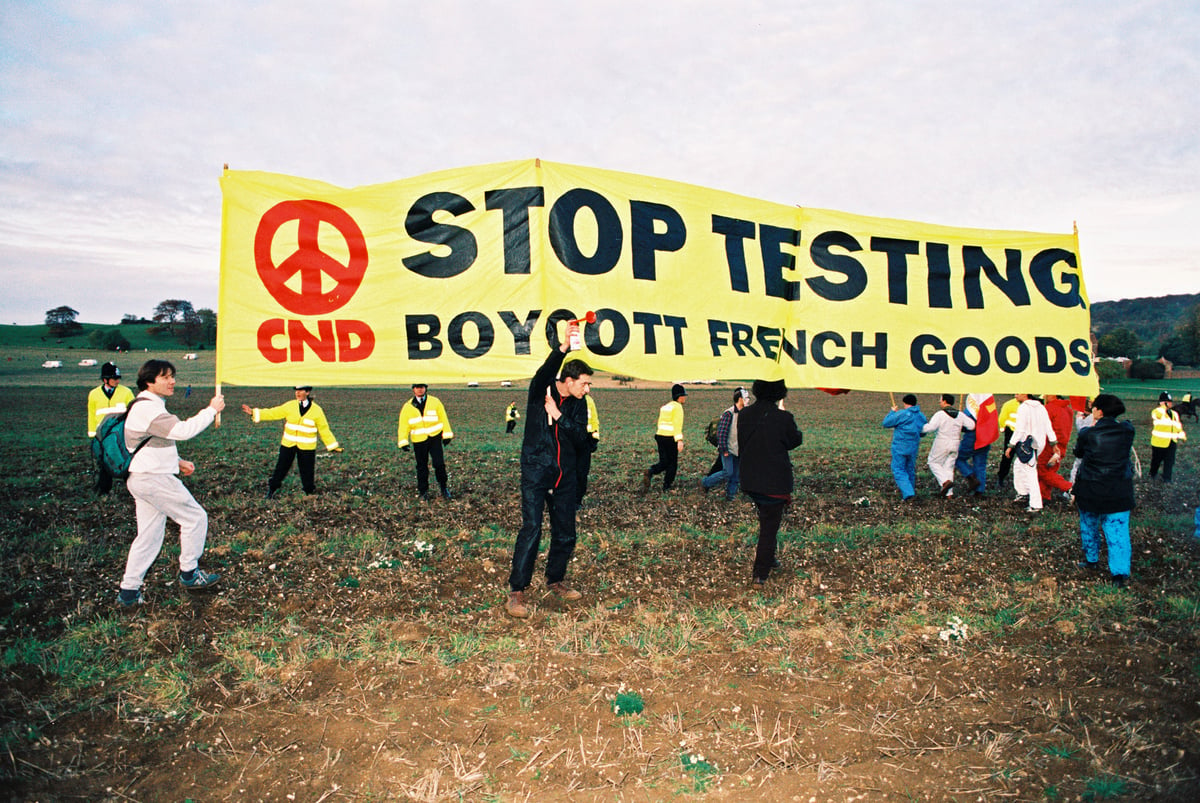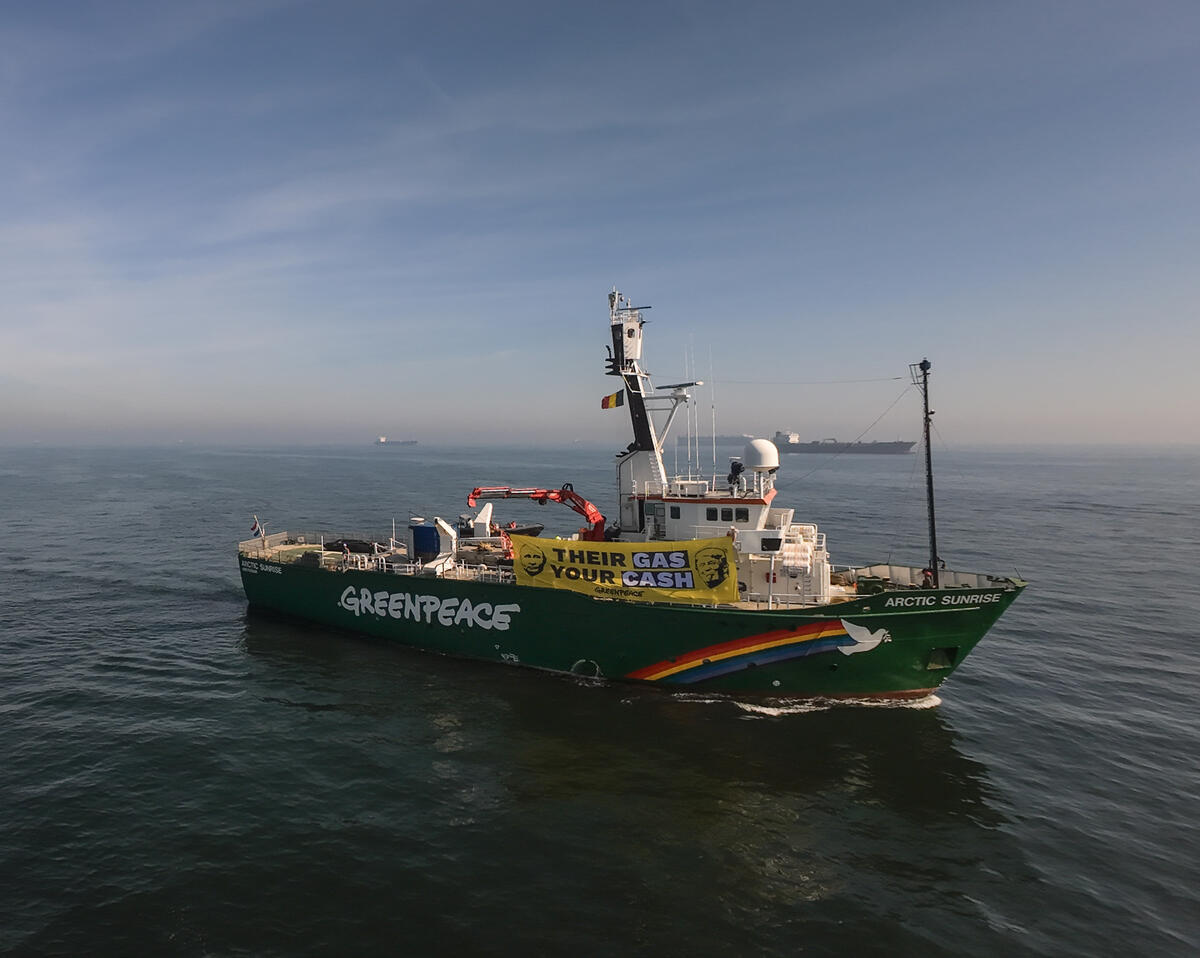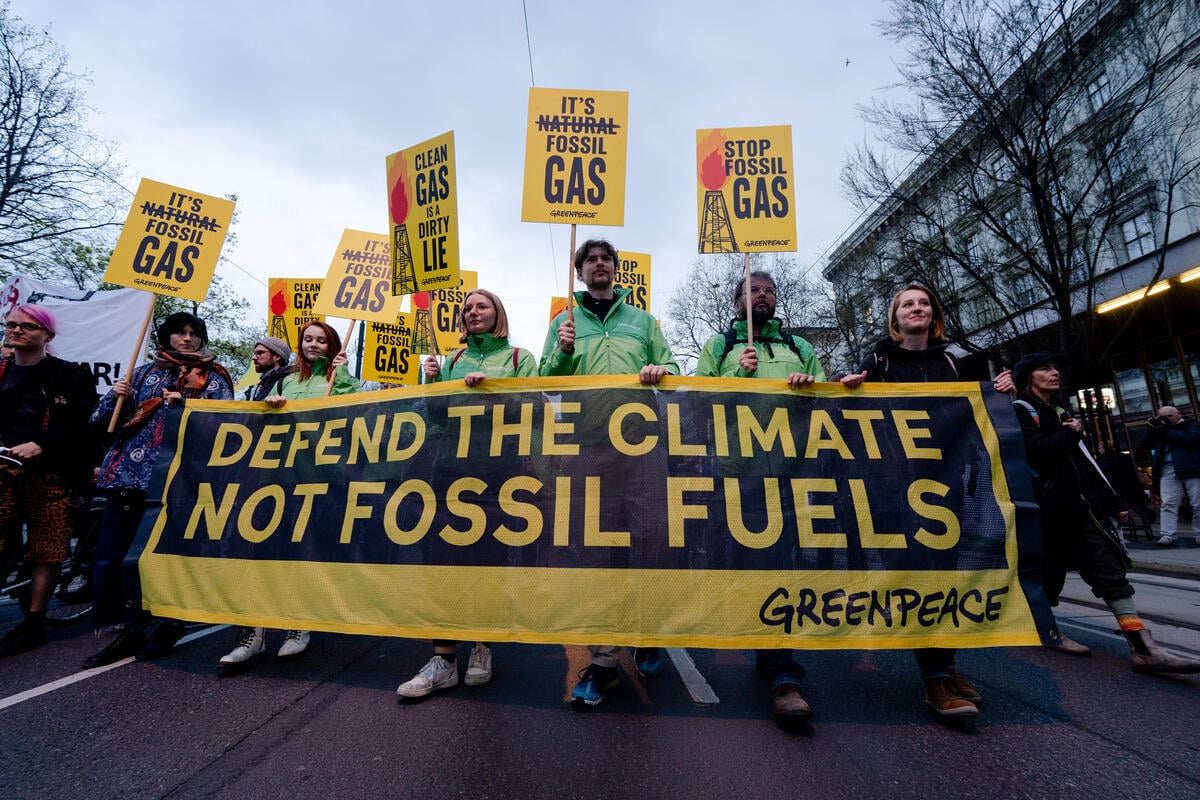Tokyo, Japan – High-level radiation hot spots have been found at the sports complex where the 2020 Tokyo Olympic torch relays will begin, according to a survey to be released by Greenpeace Japan. The radiation levels around J-Village Stadium in Fukushima Prefecture were as high as 71 microsieverts per hour at surface level. This is 1,775 times higher than the 0.04 microsieverts per hour prior to the Fukushima Daiichi triple reactor meltdown in 2011.
Greenpeace’s Nuclear Monitoring & Radiation Protection Advisors detected and documented several radiation hot spots on 26 October during its annual survey, which will be published in spring 2020. On 18 November, Greenpeace Japan sent a letter to Minister Koizumi of the Japanese Ministry of the Environment, demanding immediate decontamination measures and assurance that the public will not be exposed to radiation hot spots during the Olympics and Paralympics events at J-Village. Copies were also sent to the President of the International Olympic Committee, as well as the Presidents of the International Paralympic Committee, Japanese Olympic and Paralympic Committees, and the Governor of Fukushima Prefecture, who is also the President of J-Village.
Greenpeace has yet to receive a response from the Japanese government but is publicly releasing the information on the radiation hot spots due to an article published today (4 December) by Sankei Shimbun. The article reports some details of Greenpeace Japan’s letter to the Japanese government and Olympic bodies, which was leaked to the media by an unknown official. The article states that the soil around the particular hotspot with 71 microsieverts per hour at surface level was removed by TEPCO yesterday (3 December).
“While general radiation levels were low at the J-Village, these radiation hot spots are of significant public health concern. Radiation hot spots of such high levels can be found in the closed area around Fukushima (so-called Area 3), but should not be present in publicly accessible areas. Yet, they are at a location that has been the focus of an extensive decontamination program and is also the starting point for the Olympic torch relay in Japan.
These radiation hot spots highlight both the scale of contamination caused by the Fukushima Daiichi disaster, and the failure of decontamination efforts. We have called on the Ministry of Environment to act urgently and to initiate immediate decontamination,” said Kazue Suzuki, Energy Campaigner at Greenpeace Japan.
The radiation hot spots at the parking lot close to J-Village are of particular concern because they are located in an area that is currently visited by a large number of people. The highest figures were: 71µSv/h at contact, 32µSv/h at 10cm, 6µSv/h at 50cm and 1.7µSv/h at 1m, while the official Japanese government’s decontamination threshold is 0.23µSv/h.
“There is a risk that heavy rain will spread these higher levels of contamination on public roads, and thus re-contaminate already decontaminated surfaces. This could partially undo earlier efforts to decontaminate the public areas in J-Village. From our observations, it is unlikely that radiation hot spots of such high levels re-emerged from re-contamination after the previous decontamination. It is more logical that the decontamination was not sufficiently and thoroughly conducted in the first place,” said Shaun Burnie, Senior Nuclear Specialist at Greenpeace Germany and the team leader of the survey.
To protect public safety, Greenpeace Japan demands that the Japanese government conduct an immediate and extensive radiation survey of the public areas in and around J-Village and nearby Olympic/Paralympic venues. Furthermore, they should promptly conduct decontamination if further radiation hot spots are identified. Regular screenings of the radiation levels in J-Village should be also conducted to monitor possible re-contamination of public areas.
Greenpeace’s Nuclear Monitoring & Radiation Protection Advisors will soon re-test the J-Village to determine if subsequent decontamination attempts have been adequately conducted.
ENDS
Contacts:
Mitsuhisa Kawase, Communications Officer, Greenpeace Japan, [email protected], +81 (0) 70-3195-4165
Shaun Burnie, Senior Nuclear Specialist, Greenpeace Germany, [email protected], +49 151-6432-0548



